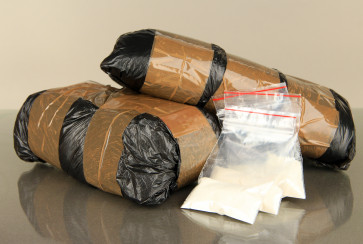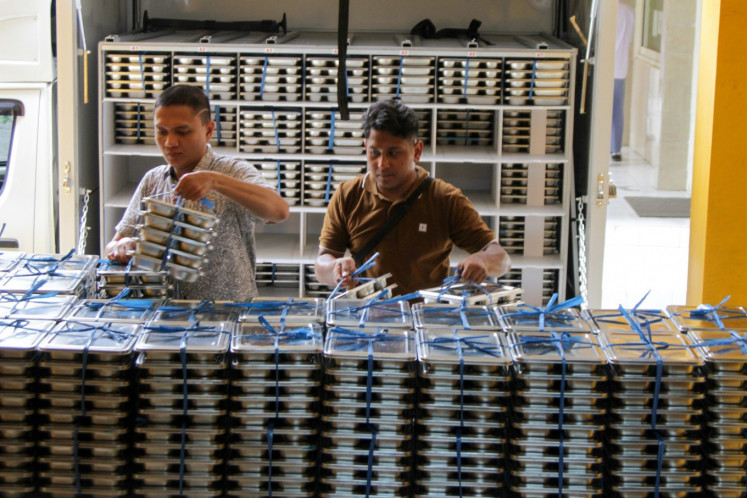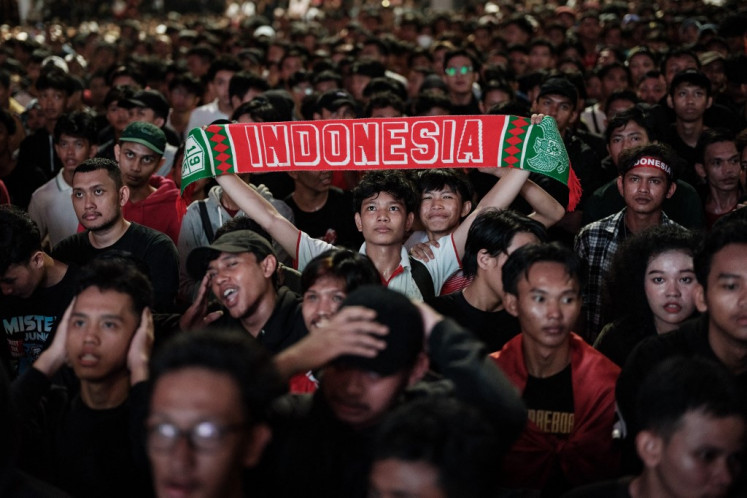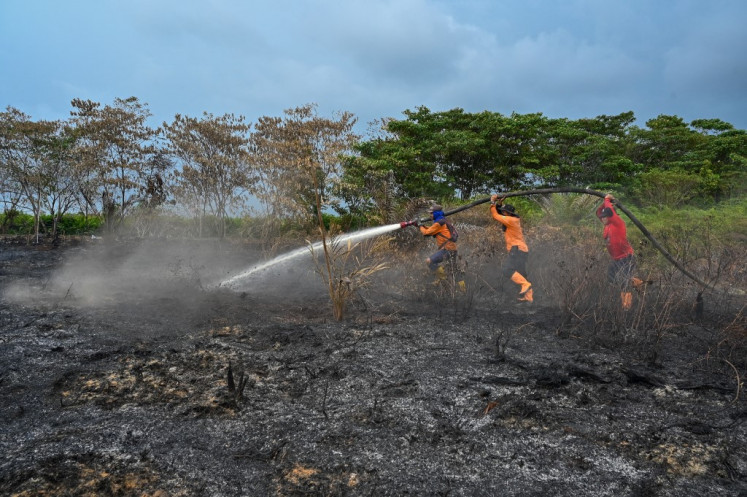Analysis: Efforts to improve natural rubber demand
Natural rubber has been one of Indonesia’s key export commodities for many years
Change text size
Gift Premium Articles
to Anyone

Natural rubber has been one of Indonesia’s key export commodities for many years.
Natural rubber exports reached a value of US$3.95 billion in 2018, making the commodity the sixth-biggest exported product. However, the value recorded last year was 22.7 percent lower than the $5.11 billion seen in 2017.
Last year also saw a 6 percent year-on-year (yoy) decrease in Indonesia’s rubber export volume to 2.81 million tons.
The main cause of the weak performance last year was a lower global price of natural rubber, as demand decreased, particularly because of the trade war between the United States and China.
Data from Bloomberg show that the average price of technically specified rubber (TSR) was only $1.36 per kilogram last year, lower than the average $1.65 per kg seen in 2017.
At the same time, the volume of China’s import of natural rubber decreased by 6.8 percent yoy to 2.6 million tons in 2018.
On top of that, global car sales decreased by 3.7 percent yoy to only 80.9 million units in 2018. Car sales in China declined 3.1 percent yoy to 28 million units in 2018.
As commonly known, the automotive industry is the biggest consumer of natural rubber, which is mainly processed into tires and spare parts.
Moreover, natural rubber is also threatened by its substitute, synthetic rubber, demand of which increased as a result of low global crude oil prices.
For the first time in history, China’s import of synthetic rubber exceeded that of natural rubber in 2016. During that year, China’s import of synthetic rubber grew 6.5 percent yoy, while natural rubber declined by 7.4 percent yoy.
This trend continued until 2018, when China’s import of synthetic rubber still grew by 1.1 percent yoy. This may indicate that China is able to produce tires using synthetic rubber rather than natural rubber, especially those used for passenger cars.
The conditions in 2018 were similar to the June 2015-March 2016 period, when the global price for natural rubber began to decline. During that period, the price even reached $1.08 per kg, the lowest since 2004.
To recover the global price of natural rubber, the three member countries of the International Tripartite Rubber Council (ITRC)—Thailand, Indonesia and Malaysia—which together produce more than 70 percent of the commodity worldwide, decided to decrease exports by 700,000 tons in 2016.
Later on, the ITRC aimed to curb natural rubber exports by another 350,000 tons during the December 2017-March 2018 period, while the latest agreement would be implemented from April to July 2019.
The main reason for these moves is to boost the global price of natural rubber by limiting supply.
Data from Trademap show that the total natural rubber exports from the ITRC member countries during the first cut in March to December 2016 reached 5.72 million tons, only 152,000 tons less than in the same period of 2015. The reduction was far smaller than the targeted 700,000 tons.
The story was similar with the cut during the December 2017-March 2018 period. Exports of natural rubber from the ITRC member countries during that period reached 2.38 million tons, just 126,000 tons lower than in the same period a year earlier. Again, the reduction fell far short of the targeted 350,000 tons.
These actions did cause a temporary hike in the natural rubber price during the implementation period. However, such a policy simply limited supply for a short period of time and did not address the fundamental problem, such as how to create more demand.
Hence, the price began to drop again when the policy ended. Moreover, it shows that controlling exports is harder without official involvement from the government.
Learning from its experience, the ITRC returned with a more detailed plan to cut natural rubber exports by 240,000 tons from April to July 2019. However, this time it is closely coordinating with governments to increase the success rate and promote more domestic consumption of natural rubber.
But can this policy really recover natural rubber from its structural problems?
As predicted, the market always reacts positively before the implementation of such a policy.
Data from Bloomberg show that the TSR price last Friday rose to $1.47 percent per kg, an increase of 17.8 percent year-to-date. The price hike was also supported by fear of a recent production problem in Thailand.
However, we think that an export cut alone will never be enough to consistently lift the global natural rubber price, as it is more of a short-term solution by disrupting supply. The realization of the last two export cuts, which did not reach the targets, could also create negative sentiment due to inadequate monitoring of the policy. Hence, the market will perceive this policy as little more than a snap action.
Nonetheless, close cooperation with governments could become the game-changer this time. Indonesia’s initiative to use natural rubber for road construction in all provinces can enhance domestic demand. On top of that, rubberized roads turn out to make for quieter driving, withstand high temperatures better and tend to prevent cracks. The road maintenance cycle can also be extended from currently once in eight years to once in 10 years. However, the road construction cost will increase by around 15 to 20 percent when rubber is added to the mixture.
If such an initiative is implemented throughout ITRC member countries, the new domestic demand could offset declining global demand.
Aside from that, we think the government can further enhance the domestic use of natural rubber by using it as a paving mixture for outdoor public areas or even as a blend for railroad cushion.
The more sustainable solution for Indonesia is obviously to develop natural rubber downstream industries, such as tires, gloves or even conveyor belts and provide them with incentives. Furthermore, downstream industries tend to have higher added value when the price of raw material is low, as it is nowadays.
_______________
The writer is an industry analyst at Bank Mandiri.









